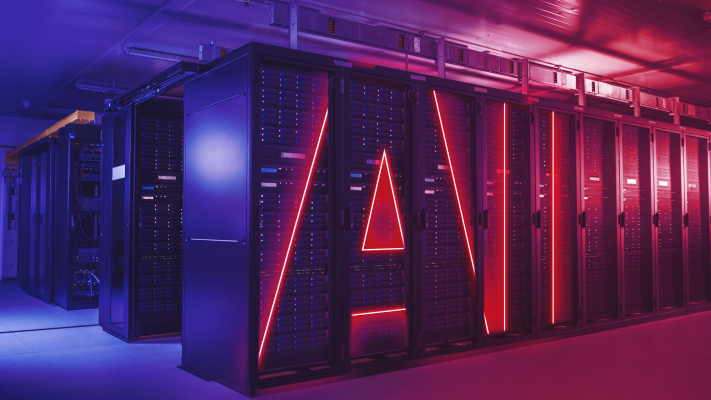
AI is impacting our world at an unprecedented pace. But this transformation relies on extraordinary processing capacity requirements that often go unseen. With computational demand doubling approximately every 100 days, we’re witnessing an historic spike in investment in AI infrastructure that rivals previous technological revolutions.
Data centers underpin the future of AI innovation, putting their performance firmly in the spotlight. Ensuring they are robust and reliable is arduous with the scale and complexity involved. Every element of infrastructure, from chip to GPU to server to network component and software, must be evaluated individually and together at the network level to ensure they operate seamlessly and eliminate any weak links. This has created a significant burden for providers to overcome; however, with the stakes involved, every efficiency gain is significant.
Before delving into the imperative of testing, let’s look at how AI is taxing data centers. The technology’s rapid growth is a result of the complex algorithms and models upon which AI applications rely; they consume more computing resources and, therefore, more energy than task-specific software. This is due to the massive computational capacity required to train the large language models (LLMs) that enable generative AI. And the need for more processing resources and data storage shows no sign of easing as AI solutions become more sophisticated and complex.
Case in point, Sam Altman recently claimed the rollout of OpenAI’s latest model was slowed due to the company being “out of GPUs.” What’s more, Goldman Sachs forecasts that by 2030, AI will drive a 165% increase in data center power. This puts infrastructure firmly in the spotlight as the industry looks for ways to create a technology environment that can support future iterations.
Navigating Infrastructure Complexity
AI data centers need to meet and manage the unprecedented appetite for computational resources; these clusters must efficiently support the intelligent era and provide the necessary compute, memory, and network performance. Testing has a pivotal role in helping overcome the challenges. To validate, optimize, and grow AI data center performance requires system-level emulators that can recreate the complexity and scale of AI workloads. As infrastructure evolves, system-level evaluation is critical to ensure a robust and reliable performance.
● Scale: Every aspect of data center operations has to grow, including power, cooling, infrastructure, storage, and bandwidth. A critical aspect of achieving this is addressing latency issues in distributed computing environments. AI clusters, which allocate tasks across GPUs, are prone to performance bottlenecks caused by tail latency— the lag time of the system’s slowest components. Effective scaling needs to detect and minimize this through workload balancing.
However, compliance is not enough, a component’s performance must be evaluated to see how it handles network protocol data and forward error correction. For example, a compliant transceiver could fail because it wasn’t properly tested at the protocol/network layers.
Testing helps operators identify systemic inefficiencies, optimize resource allocation, and ensure that the system maintains high performance across all nodes. With fine-tuning, data centers can drive efficiency gains as they grow, improve operations, and resource utilization.
● Specialized hardware: AI-specific hardware is critical to deliver more computational resources. For example, Nvidia’s latest superchip improves performance by a factor of 30 while using 25 times less energy. It’s not just chips—AI requires everything to be faster, from interconnects to memory to network inference cards to switches, along with more power.
However, these advancements demand rigorous evaluation beyond compliance tests to establish performance under peak loads. System-level validation is crucial to ensure everything operates reliably under real-world conditions. Stress testing guarantees that AI equipment delivers the promised performance. Interconnects and fabrics can be optimized with network validation to prevent bottlenecks and memory and storage assessments ensure rapid data access. By integrating comprehensive testing, operators can scale efficiently.
● Intelligent workload: Meeting the computational demands requires moving to disaggregated architectures so resources can be dynamically allocated. Testing can validate intelligent management and should incorporate emulation to benchmark network fabrics along with dynamic resource allocation and auto-scaling.
Ensuring network performance requires stress testing using real-world models, benchmarking, and finding the tail latency, all of which improve workload allocation. This enables operators to meet performance targets
while dynamically managing resources based on current and predicted demands. Adding sophisticated software into the stack is critical to maximize performance.
The Path Forward
As AI models continue to drive exponential demand for computational resources, we find ourselves in the midst of a technological arms race to modernize infrastructure. However, if Goldman’s projections are to materialize, meticulous evaluation at both component and system levels becomes not just important but essential. This rigorous testing is the key to identifying inefficiencies and ensuring every aspect of data centers remains robust, reliable, and optimized at the necessary scale – ultimately determining which organizations will lead in the AI-powered future.





